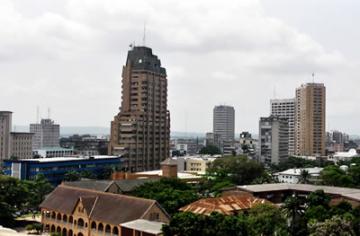Housing supply limited in Democratic Republic of Congo
 In Kinshasa, land values are even higher – an estimated US$100 000 per hectare in well-serviced residential areas.
In Kinshasa, land values are even higher – an estimated US$100 000 per hectare in well-serviced residential areas.
Affordable housing supply within the DRC is still in its early stages of conception. With a population of more than 70 million people, with a staggering 71 percent living below the poverty line, housing supply is limited to the minority elites.
In many areas, people still use natural materials to build informal houses for themselves. Basic infrastructure is poor, but the past three years have seen substantial road-building projects financed by international donors and China.
The water sector is also receiving international aid. China has become one of the most active partners with the DRC government and has undertaken to help in a number of sectors (education, health, water supply, electricity and rural development), but the DRC also receives substantial support from the World Bank, the EU, and many bilateral donors.
In 2009, a Chinese company, China Machinery and Equipment Import and Export Corporation, announced a plan to build 2.5 million social houses. The project is expected to commence in 2015 and will be undertaken in four phases. It will be affordable by all income levels.
An Italian company, Schnell House, has also expressed interest in investing in the housing sector. The company plans to build 500 000 houses in the province of North Kivu with prices of $4000 or$15 000.
Renaissance Capital is also involved in housing development, with a 6 400 acre city planned for outside Lubumbashi. This is more than double the size of the site in the company’s flagship project, Tatu City, in Nairobi, Kenya. Shelter Afrique and ELOLO SPRL, a construction, wholesale trade and import-export company, signed a US$4 million facility agreement to co-finance the development of a 10-storey building in Kinshasa. The total cost of the project is estimated at US$7 million and it will be completed by the end of 2013.
The construction and public works sector grew by 10 percent in 2011, contributing 0.9 percent to GDP growth in that year. This was achieved despite a 19.6 percent decrease in cement production. The supply of cement in the DRC has never been sufficient and much is imported. To support the construction sector, government lifted taxes on cement imports.
Property Market
Property prices are high and generally aimed at the high end market. According to real estate agent Knight Frank, prime yields of 15 percent can be realised in DRC’s retail market, with rents of US$35 per m2 per month.
Industrial property yields 13 percent at US$8 per m2 per month, followed by offices that yield 12 percent at US$45 per m2 per month. The residential market yields 10 percent with rents of US$8 000 a month for a four bedroom executive house.
Beyond the limited, high-end market, however, a clash between statutory and customary land laws undermines property market developments and achieving legal title. Land administration systems are lacking. As a result, where land titling does exist, the price is high (US$800 to US$1 000 per hectare). In Kinshasa, land values are even higher – an estimated US$100 000 per hectare in well-serviced residential areas.
Most Popular
Watch: A Credible Market, the need for Standards in Property Industry
Valuation standards have a significant role to play in helping to regulate professional practice at national, regional and global levels, promoting professional ethics, integrity, impartiality and trust in valuer activities in the property industry. ... Full story







